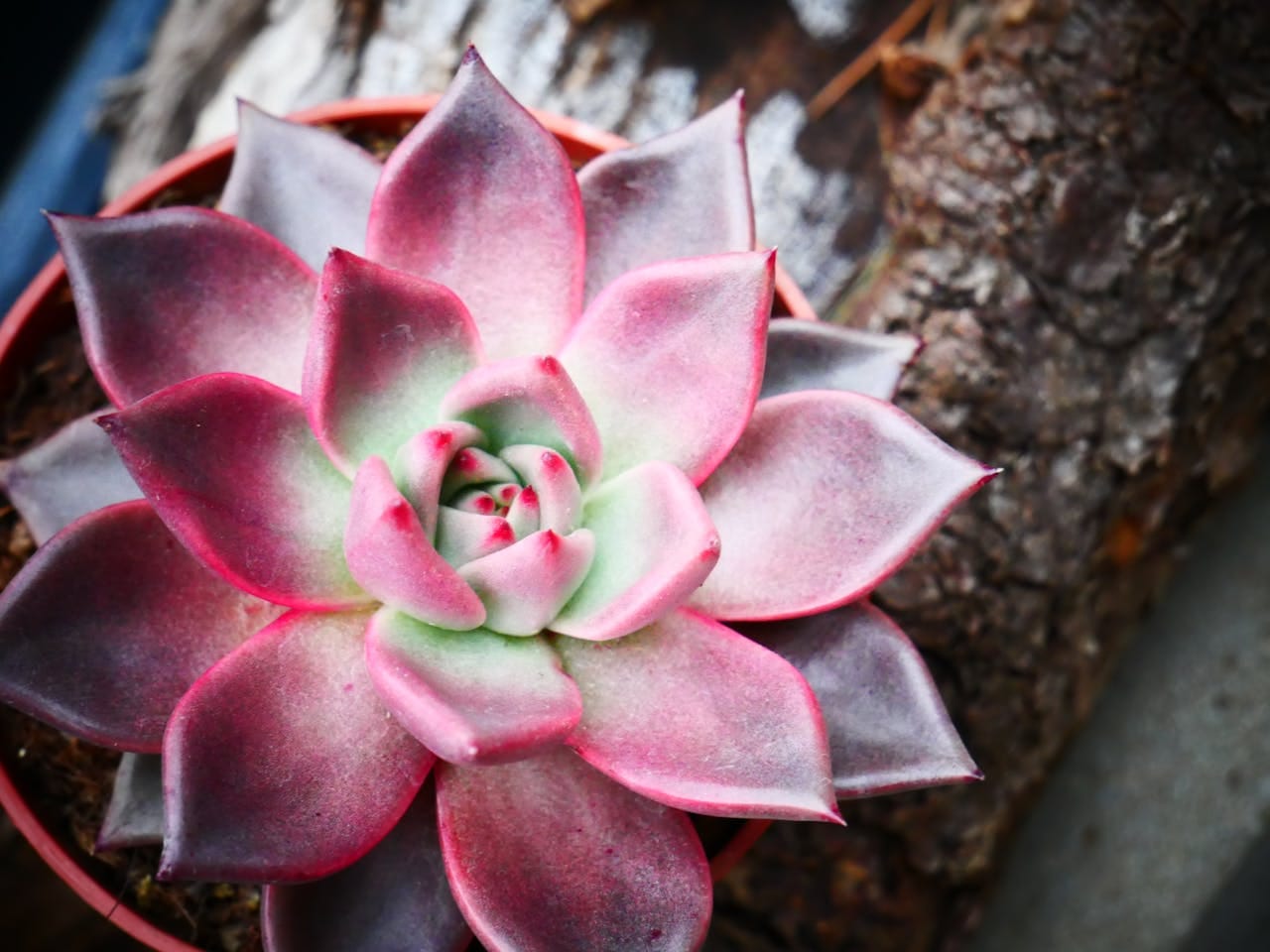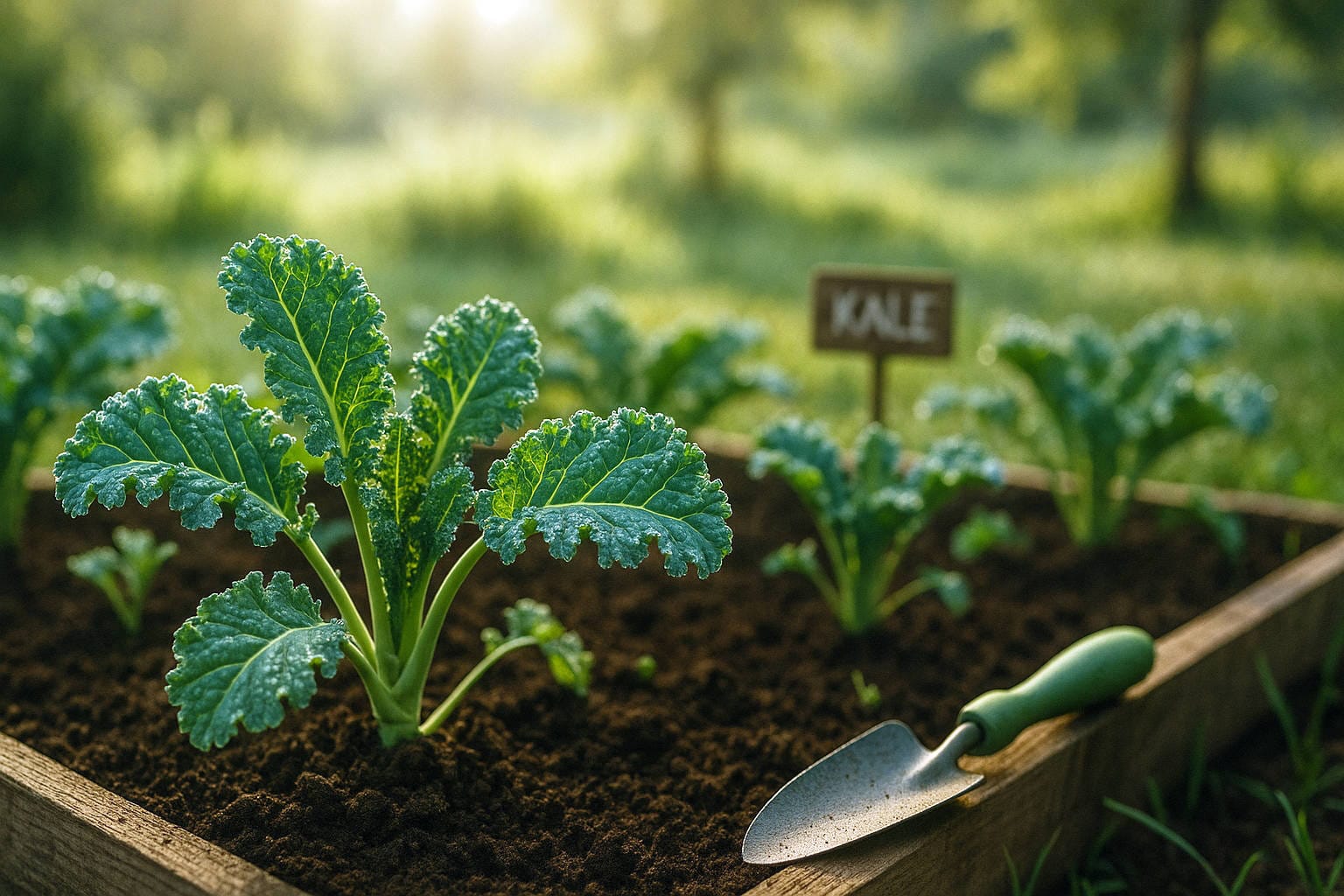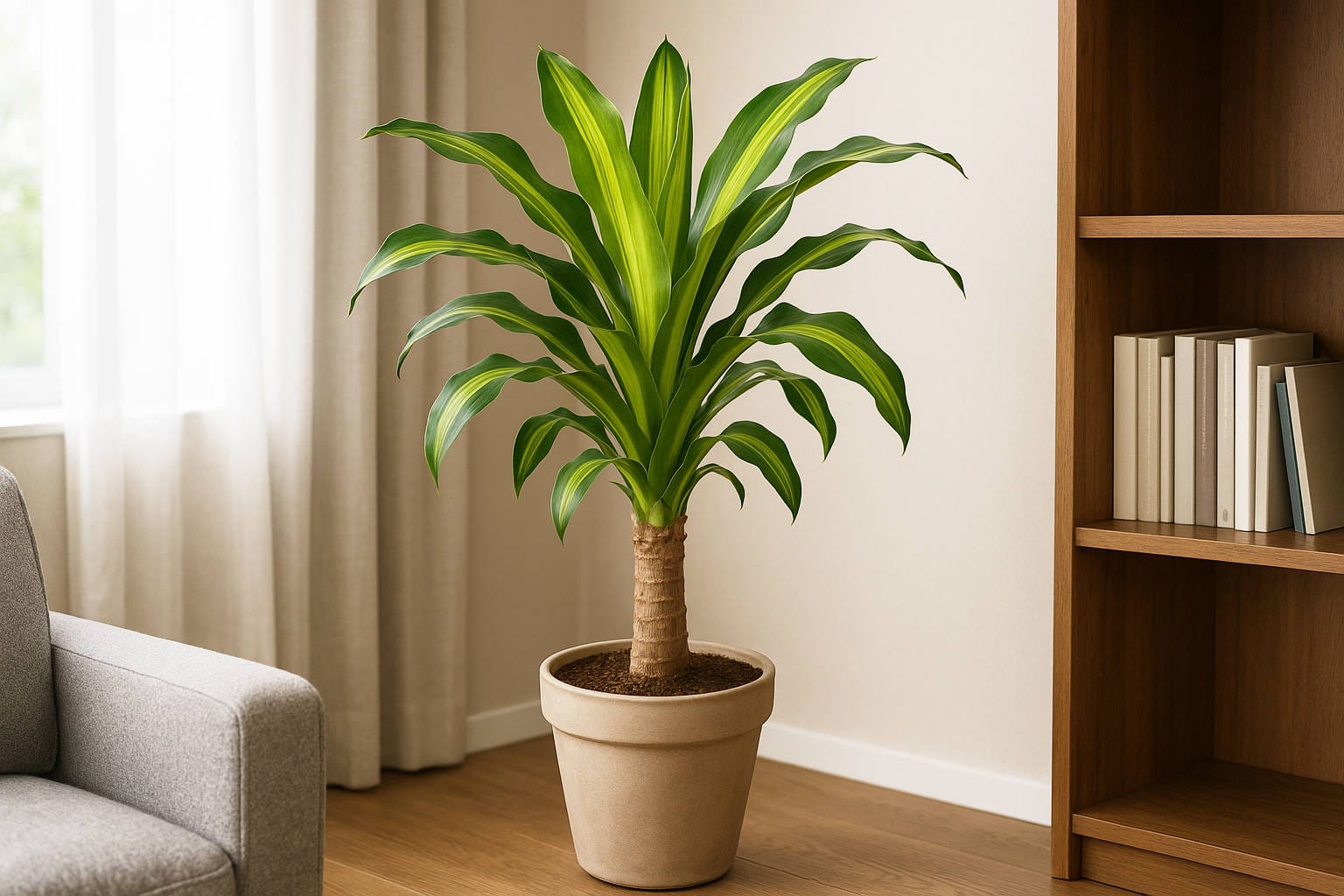So, you’ve fallen in love with succulents. Who hasn’t, right? These chunky little plants are everywhere—from Instagram-worthy windowsills to stylish office desks.
But here’s the thing: while succulents look easy to care for, they’re not exactly set-it-and-forget-it plants. If you’ve ever had one go squishy and sad, you know what we’re talking about.
In this ultimate guide, we’re breaking down everything you need to know about succulents—what they are, how to plant them, when to water (and when to absolutely not), how to repot without killing them, and how to keep them looking fresh, not leggy and weird.
We’ll also cover lighting, pruning, pests, propagation, and even creative ideas for showing them off.
Stick with us till the end and you’ll know how to keep your succulents not just alive, but thriving.
What Are Succulents?
Alright, before we start messing with soil and pots, let’s get clear on what succulents actually are.
In simple terms, succulents are plants that store water in their leaves, stems, or roots.
That’s what gives them that thick, fleshy look—and why they’re so good at surviving dry conditions. Think of them as the camels of the plant world.
Succulents come in hundreds of shapes, sizes, and colors. You’ve probably seen classics like Aloe Vera, the Jade Plant (Crassula), Echeveria rosettes, or those tiny Haworthia that look like miniature aloe plants.
Cactus? Yup, they’re part of the succulent family too—though not all succulents are cacti.
Most succulents originate from arid regions like deserts in Africa, Central America, and Asia, which explains why they don’t like to be babied with constant watering. They’re built for survival in tough environments—just not in soggy soil.
The cool part? There’s a succulent for just about any space.
Want something for a sunny windowsill? Try Sedum. Need a low-light buddy for your office? Haworthia’s your guy.
Starting with the right type of succulent based on your space and lighting makes all the difference.
So yeah, succulents aren’t just trendy—they’re hardy, diverse, and a lot of fun once you get the hang of them.
You may also like:
Choosing the Right Succulent for Your Home or Garden
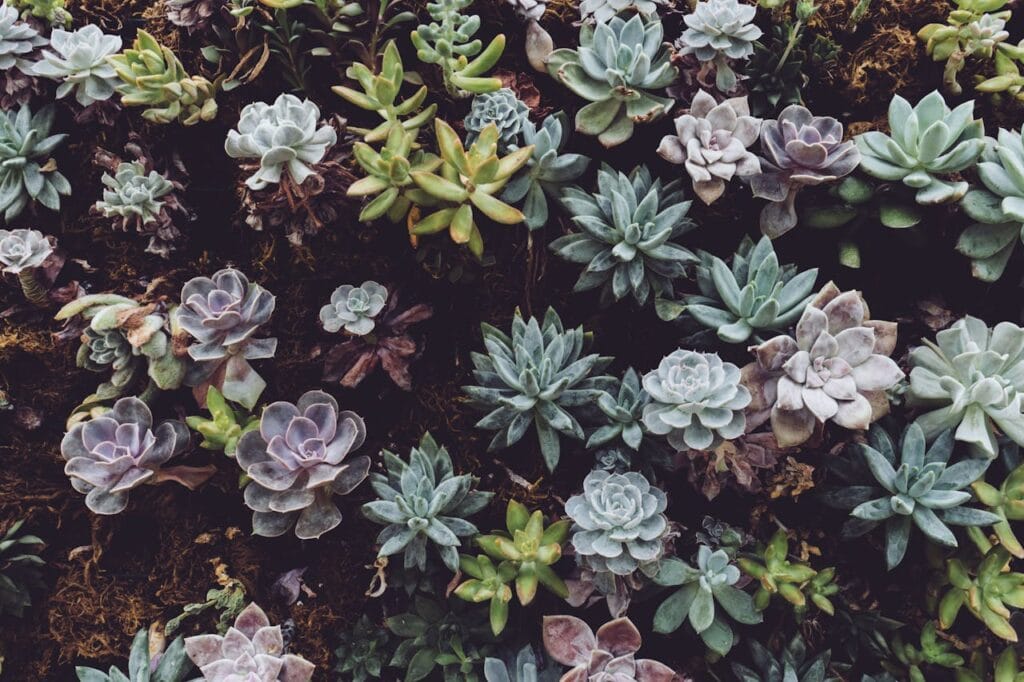

Not all succulents are created equal—and picking the right one for your space is a game changer.
Want your plants to thrive, not just survive? Let’s get you matched with the right succulent.
Indoor vs. Outdoor
If you’re keeping your succulents inside, go for varieties that don’t need intense light all day. Haworthia, Gasteria, and Snake Plant (yep, that’s a succulent too) all handle lower light like champs.
Got a bright windowsill? Echeveria and Jade Plants love that.
Outdoor options can handle more sun and even temperature swings. Think Agave, Sedum, or cold-hardy Sempervivum (also called “Hens and Chicks”).
Just make sure you know your local climate and USDA zone before planting them outside—especially if you live somewhere that gets frost.
Climate Considerations
Live in Arizona or Southern California? Lucky you—most succulents will love that dry heat.
But if you’re in the UK, Canada, or a chillier part of the US or Australia, you’ll need cold-tolerant succulents or plan to bring them inside during winter.
Look into Sempervivum and some Sedums—they can handle frost way better than the soft-leaved tropical types.
Got Pets?
Important PSA: Some succulents are toxic to cats and dogs. Aloe Vera, Euphorbia, and Kalanchoe are big no-no’s if your pets are nibblers.
Go with non-toxic options like Haworthia or Burro’s Tail (Sedum morganianum) instead.
Bottom line? When choosing a succulent, think about where you’ll keep it, how much light it’ll get, how cold it gets at night, and whether you’ve got curious pets around.
You may also like:
How to Plant and Repot Succulents
Okay, so you’ve picked your succulent—nice! Now it’s time to get your hands dirty (literally), and there are a few key things to know.
Picking the Right Pot
First rule of succulent club: use a pot with drainage holes. Succulents hate sitting in soggy soil.
No drainage? No deal. Terracotta pots are a solid choice because they let the soil dry out faster, but any container with a hole in the bottom will do.
Also, don’t go crazy with oversized pots. A pot that’s too big holds too much moisture, and that’s a fast track to root rot. Pick a pot that’s just a bit bigger than the plant itself.
The Best Soil for Succulents
Regular potting soil? Not gonna cut it. You need something that drains fast.
Go for a cactus/succulent mix, or make your own with 2 parts potting soil, 1 part coarse sand, and 1 part perlite or pumice. That combo keeps things airy and avoids waterlogging.
How to Repot (Without Killing It)
- Let it dry out first. Don’t water your succulent the day before repotting. Dry roots are less fragile.
- Remove it gently. Hold the base, tilt the pot, and ease it out. Shake off old soil.
- Check the roots. Trim any mushy or dead ones with clean scissors.
- Replant in dry soil. Place the plant in the new pot, fill in with your soil mix, and don’t water for a few days. This gives the roots time to settle and heal.
Pro tip: If you’re transplanting a baby offshoot (called a “pup”), let the cut end dry for a day or two before planting it. That helps prevent rot.
You may also like:
Watering Succulents the Right Way
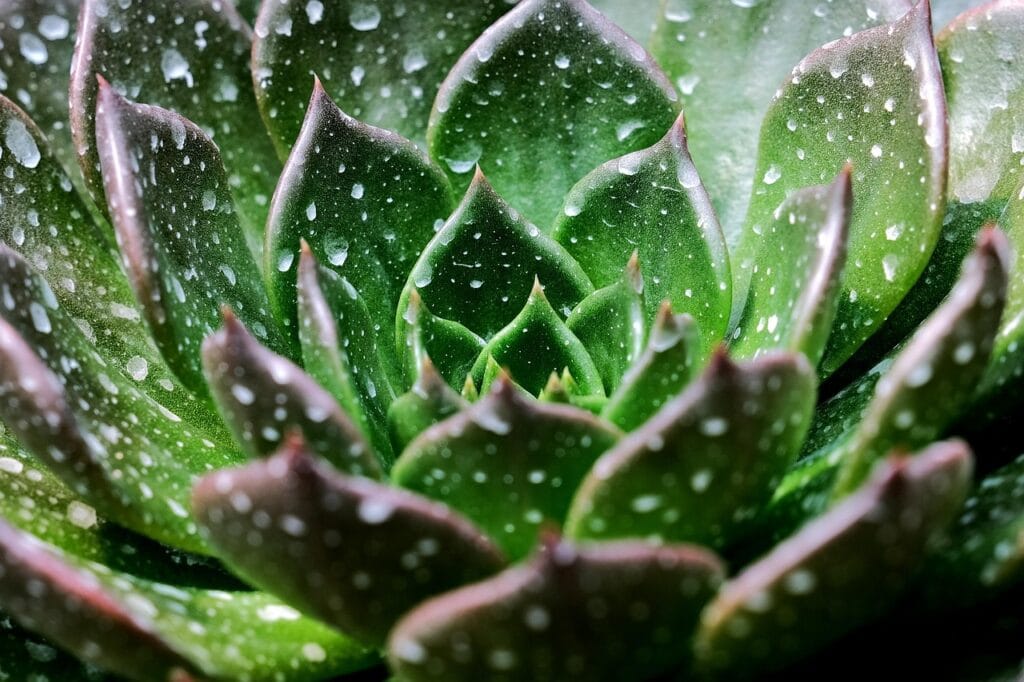

This is where most people go wrong. Let’s clear this up: succulents don’t need a little water every day—they need a lot of water once in a while.
Sounds weird, but trust us, it works.
The “Soak and Dry” Method
This is the gold standard for watering succulents. You soak the soil completely—like, water running out of the drainage holes—then you let it dry out 100% before watering again.
No damp soil, no top-watering sprinkles. Just a full soak and then patience. If you’re keeping your plant indoors, this usually means watering every 2–3 weeks.
Outdoors, in hot or dry climates? Maybe once a week. But always check the soil first. Stick your finger in there—if the first 2 inches are dry, you’re good to go.
Signs You’re Overwatering (or Underwatering)
Overwatering: Mushy leaves, black spots, leaves dropping off for no reason? Yeah, you’re drowning it. The roots might already be rotting.
Underwatering: Wrinkled, shriveled leaves that feel soft? That plant’s thirsty. Give it a solid soak.
Seasonal Watering Changes
Succulents go semi-dormant in the winter, so they don’t need as much water. Cut way back—sometimes once a month is enough.
During spring and summer, when they’re actively growing, you can water more often (still using the soak and dry method).
Also, keep in mind that outdoor succulents dry out faster due to sun and wind, while indoor ones might need less frequent watering—especially in humid areas.
So yeah, when it comes to watering succulents, less is more… but when you do it, do it right.
You may also like:
Light, Temperature, and Placement Tips
Let’s talk location—because where you put your succulent can make or break it. These little guys love the sun, but not too much, and definitely not the wrong kind.
Light: How Much Is Enough?
Most succulents need bright, indirect light for at least 4–6 hours a day. A sunny windowsill (south- or east-facing) is usually perfect.
But direct afternoon sun through glass can fry your plant—especially soft-leaved varieties like Echeveria. If you notice sunburn (bleached or brown spots), move it slightly away from the window.
On the flip side, if your succulent starts to stretch out or lean toward the light, it’s not getting enough.
That’s called etiolation. Not cute.
Try moving it closer to a light source, or supplement with a grow light, especially in darker months or cloudy climates like the UK or Pacific Northwest.
Temperature: What They Can (and Can’t) Handle
Succulents generally like it between 60°F and 80°F (15°C to 27°C).
Most indoor conditions are fine. But cold is the enemy—many succulents can’t handle frost. If temps dip below 40°F (4°C), bring outdoor plants inside or cover them up.
Cold-hardy types like Sempervivum and some Sedums are exceptions—they can handle freezing, but most tropical succulents can’t.
Indoor vs. Outdoor Placement
Outside? Give them morning sun and afternoon shade, especially in super hot areas.
Inside? Rotate the pot every week or so to keep growth even. Also, avoid dark corners or spots near air vents and drafty windows—sudden temperature changes stress them out.
In short, succulents love light, tolerate heat, hate frost, and absolutely do not want to be forgotten on a shady shelf.
You may also like:
Pruning, Propagating, and Maintaining Healthy Growth
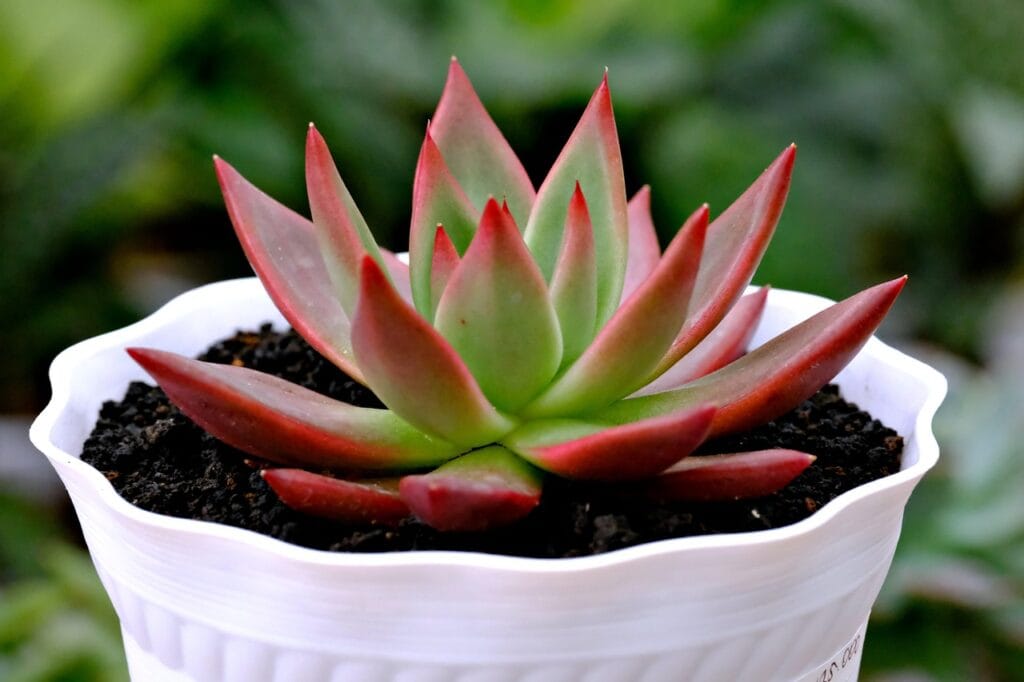

Succulents don’t need a lot of fuss, but a little maintenance goes a long way.
If you want your plants to stay compact, colorful, and thriving, it’s worth learning when to prune, how to propagate, and how to keep them looking their best.
Pruning: When and Why to Trim
Got stretched-out stems, dried-up leaves, or an overgrown succulent taking over its pot? Time for a trim.
Pruning helps redirect the plant’s energy to healthy growth.
Just grab clean scissors or pruning shears, snip off the leggy bits or dead leaves at the base, and you’re good.
If you’re pruning a tall, stretched succulent (like a Jade Plant or Echeveria that’s grown a long stem), cut the top off, let the wound callous for a few days, and replant it—that’s how propagation starts.
Propagation: Multiply Your Plants (For Free)
There are three common ways to propagate succulents:
- Leaf propagation: Gently twist off a healthy leaf (whole, no rips), let it dry for a day or two, then place it on dry soil. Mist lightly every few days. After a week or two, you’ll see roots or baby rosettes form.
- Stem cuttings: Works well with leggy succulents. Cut a stem, let it callous, then replant.
- Offsets (pups): Some succulents, like Aloe or Haworthia, grow little baby plants at the base. You can pop these off and replant once they’re a decent size.
Keeping It Looking Good
To keep your succulents compact and healthy:
- Rotate them every week or two so they grow evenly.
- Remove dried-up leaves at the base (they’re normal).
- Fertilize lightly in spring/summer—use a diluted cactus fertilizer once a month.
Succulent care isn’t hard, but regular pruning and propagation make a big difference in how your plants look and grow over time.
Pest and Disease Management for Succulents
Even though succulents are tough, they’re not invincible. Every now and then, bugs or rot show up to mess with your plants.
But don’t stress—it’s totally manageable if you catch it early.
Common Pests
The usual suspects? Mealybugs, aphids, fungus gnats, and spider mites.
Mealybugs are the most annoying—they look like tiny cotton balls hiding in the crevices of leaves and stems. If you spot them, isolate the plant ASAP and dab them off with a Q-tip dipped in rubbing alcohol. Works like a charm.
Fungus gnats often show up if your soil’s too moist. Let the soil dry out completely between waterings and consider adding a top layer of sand or gravel to discourage eggs. You can also use yellow sticky traps or a diluted hydrogen peroxide soil soak.
Root Rot: The Silent Killer
By far the most common succulent problem is root rot, caused by overwatering or poor drainage.
You usually won’t know it’s happening until the plant starts looking mushy, wobbly, or drops leaves like crazy.
If that happens, unpot it, cut away any black or mushy roots, and let it dry for a day or two before repotting in fresh, dry succulent soil.
Preventing Problems Before They Start
- Water only when the soil is bone dry.
- Use pots with proper drainage.
- Keep leaves dry—water the soil, not the plant.
- Quarantine new plants for a few days to check for pests before mixing them in with others.
Stay on top of these simple steps, and you’ll keep your succulents happy, pest-free, and looking sharp.
Creative Ideas for Decorating with Succulents


Succulents aren’t just easy to care for—they’re also ridiculously good-looking; they’re perfect for adding life to your space.
Let’s talk about creative ways to show them off.
Succulent Arrangements
Group different types together in one pot for a mix of colors, shapes, and heights. Echeveria, Crassula, and Sedum look amazing side by side.
Use a shallow bowl or a low-profile planter and build your arrangement like you’re designing a mini landscape. Just make sure all the plants have similar light and water needs.
Terrariums (With a Warning)
Glass terrariums look cool, but they can be tricky. Closed containers hold moisture, and that’s a no-go for most succulents.
If you’re going this route, pick an open-top terrarium and layer it with gravel, charcoal, and well-draining soil. Keep watering light and infrequent.
Wall Planters and Vertical Gardens
Yep, you can grow succulents on your wall.
Use a frame or vertical planter with shallow pockets and fast-draining soil. Great for sunny patios or balconies.
Just remember to water carefully—vertical planters dry out faster than regular pots.
Hanging Planters
Trailing succulents like String of Pearls, Donkey’s Tail (Burro’s Tail), and String of Bananas are made for hanging.
Let them cascade over the edges of a basket or wall planter. Hang them near a bright window and rotate them every few weeks for even growth.
DIY Succulent Gifts
Need a last-minute gift? A mini succulent in a small ceramic pot or teacup = instant charm.
Add a tag with care instructions, and boom—you’ve got a handmade present that won’t die in a week (as long as they follow the rules, of course).
Succulents are more than just houseplants—they’re tiny, living design pieces. Let your creativity run wild.
Conclusion
So—can you keep succulents alive and thriving at home? Absolutely.
Once you understand their needs—like well-draining soil, the right light, and not drowning them with love (aka water)—succulents are some of the easiest and most rewarding plants to grow.
You’ve now got the full playbook. The best part? Succulents are super forgiving once you stop overthinking them.
Remember: less water, more light, and a bit of attention here and there go a long way. Give them the right conditions and these little survivors will reward you with years of low-maintenance beauty.
Now that you’ve got the full scoop on succulent care, it’s time to get your hands dirty—and have some fun doing it.
Got questions? Want to show off your succulent setup? Drop a comment below—We’d love to hear how your plants are doing, what’s working for you, or what you’re struggling with.
And if you’re branching out beyond succulents, don’t miss our complete guide on how to grow and care for roses—packed with tips for gorgeous blooms.
FAQ – Common Questions About Succulent Care
1. How often should I water my succulents?
Most succulents need water every 2–3 weeks indoors. Let the soil dry out completely between waterings. Outdoor succulents may need more frequent watering depending on climate.
2. Why are my succulent’s leaves turning yellow or mushy?
That’s usually a sign of overwatering or poor drainage. Check the soil and roots—if they’re soggy or blackened, it may have root rot. Let it dry out and repot in well-draining soil.
3. Can succulents survive in low light?
Some can! Varieties like Haworthia and Snake Plant tolerate lower light, but most succulents prefer bright, indirect sunlight. Lack of light causes stretching (etiolation).
4. What’s the best soil for succulents?
Use a cactus or succulent mix, or make your own with potting soil, coarse sand, and perlite or pumice. It needs to drain fast to avoid root rot.
5. How do I propagate a succulent?
You can propagate using leaves, stem cuttings, or offsets. Let the cutting or leaf dry out for a day or two, then place it on dry soil and mist lightly until roots or new growth appear.


